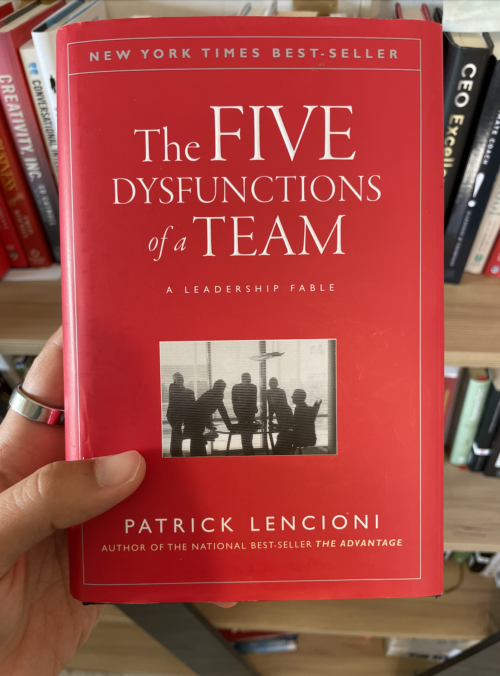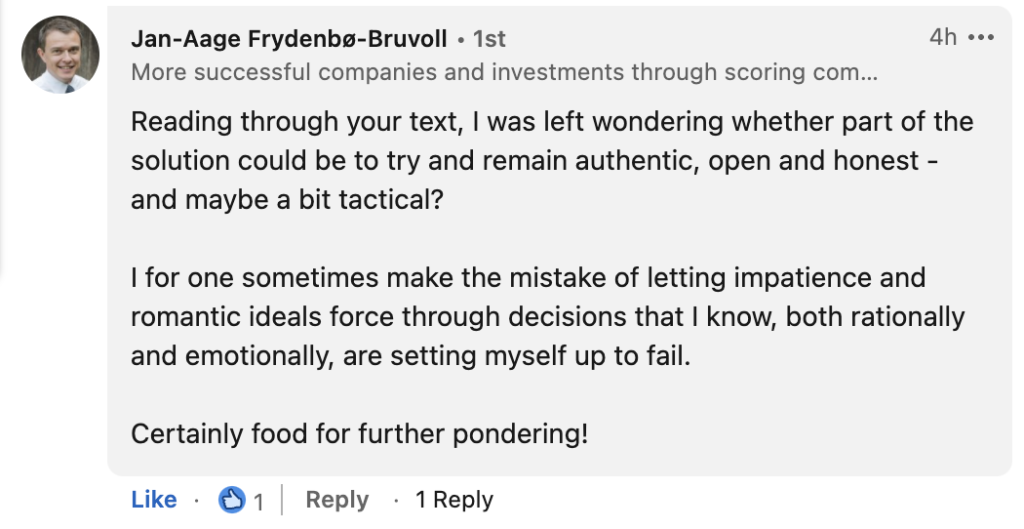Bill Campbell was Silicon Valley’s most impactful coach.
He coached Steve Jobs, Larry Page, Sergey Brin, Eric Schmidt, Sheryl Sandberg, and Ben Horowitz among others.
Bill’s 34 leadership and strategy principles:
#1 – Your Title Makes You a Manager, Your People Make You a Leader.
How do you earn the respect of your people?
Certainly not by being a dictator and telling them what the hell to do.
Make sure people feel valued being in the room with you.
Project humility and selflessness.
#2 – It’s the People.
Your top priority as a manager is the well-being and success of your people.
Help people excel and grow.
Give them the tools, information, training, and coaching they need to succeed.
Free them to do their jobs and make decisions.
#3 – Start with Trip Reports.
People want to talk to you about other things than just the job.
To build rapport and better relationships, start team meetings with trip reports or other types of personal, non-business topics.
#4 – Get your 1:1’s Right
Have a structure for 1:1’s and take the time to prepare for them, as they’re the best way to help people be more effective and to grow.
Start with nonwork stuff—and then move to performance.
#5 – Best Idea, Not Consensus.
Bill hated consensus.
Consensus leads to “groupthink” and inferior decisions.
Your role as a manager is to make sure all perspectives get heard and considered.
But if the best idea doesn’t emerge, you have to force it or make it yourself.
#6 – Lead Based on First Principles.
What are those immutable truths and values that are the foundation for your company?
When faced with a tough decision, help the team guide the decision from those principles.
You can argue opinions, but you can’t argue first principles.
#7 – Manage the Aberrant Genius.
It’s worth investing energy in coaching the diva, the star performer who’s a pain to work with.
Support them and let them run as long as their behavior isn’t unethical or abusive.
Show zero tolerance though if they do more harm than good.
#8 – Money’s Not Just About the Money.
Money is a signalling device for recognition.
Be generous.
Compensating people well demonstrates love and respect—and ties them strongly to the goals of the company.
#9 – Innovation Is Where the Crazy People Have Stature.
Give your engineers or the people who create products some freedom.
Not being a conformist is a strength.
#10 – Let People Leave with Their Heads Held High.
If you have to let people go, be generous, treat them well, with respect.
Send out a note internally celebrating their accomplishments.
“You cannot let them keep their job, but you can let them keep their respect”, Bill said.
#11 – Build an Envelope of Trust.
Trust means you keep your word.
Trust means loyalty. To each other, to your team and company.
Trust means integrity. Being honest and expecting the same.
Trust doesn’t mean you always agree, rather it makes it easier to disagree!
#12 – Only Coach the Coachable.
What makes a person coachable?
• Honesty and humility
• Willingness to persevere and work hard
• Constant openness to learning.
If they don’t meet these criteria, they won’t get far in the coaching relationship.
#13 – Practice Free-Form Listening.
Listen to people with your full and undivided attention.
Don’t think ahead to what you’re going to say next.
When you listen, people feel valued.
#14 – No Gap Between Statements and Fact.
Be relentlessly honest and candid.
Say what you really think in a way that still lets people know you care.
Give feedback asap, and if the feedback is negative, deliver it privately.
#15 – Don’t Stick It in Their Ear.
Don’t tell people what to do.
Offer stories and help guide them to the best decisions for themselves.
You need people to buy in.
Support them, inspire them—but let them and figure out what to do.
#16 – Be the Evangelist for Courage.
Believe in people more than they believe in themselves and push them to be more courageous.
Your people will be naturally afraid of taking risks for fear of failure.
It’s your job to push them past their reticence.
#17 – Full Identity Front and Center.
People are most effective when they are themselves and bring their full identity to work.
Others can sense when you’re not being yourself—and that breeds distrust.
Resist that pressure to conform. What makes you different is your strength.
#18 – Team First.
You can’t get anything done without a team.
So the most important thing to look for in people is a team-first attitude.
That the team wins has to be the most important thing.
#19 – Work the Team, Then the Problem.
Managers tend to focus on the problem.
What is the situation? What are the options?
When faced with a problem, the #1 step is to ensure the right team is in place and working on it.
Think harder about the team rather than the problem.
#20 – Pick the Right Players.
The top characteristics to look for are smarts and hearts:
• Ability to learn fast
• Willingness to work hard
• integrity
• Grit
• Empathy
• Team-first attitude.
#21 – Pair People.
Peer relationships are critical and often overlooked.
Seek opportunities to pair people up on projects or decisions.
#22 – Everyone Needs to Be at the Table.
Winning depends on having the best team.
And to have the best team, you need diversity.
#23 – Solve the Biggest Problem.
Identify the biggest problem, the “elephant in the room,” and tackle it first.
Tension arises when the process hasn’t led to the best decision—and the personalities take over.
Spot the tension and force a decision no matter how hard it is.
#24 – Don’t Let the Bitch Sessions Last.
Air all the negative issues, but don’t dwell on them.
Move on as fast as possible.
It’s important to get out the negative and vent emotions, but that has to happen quickly so the team can direct its energy to solutions.
#25 – Winning Right.
Strive to win, but always win right, with commitment, teamwork, and integrity.
#26 – Leaders Lead.
When things are going bad, you can’t afford to doubt. You need to commit.
You can make mistakes, but you can’t have one foot in and one foot out.
Because if you’re not fully committed, then your people around you won’t be either.
If you’re in, be in.
#27 – Fill the Gaps Between People.
Listen, observe, and fill the communication and understanding gaps between people.
Pay attention to body language, mood shifts, side conversations and spot when someone is frustrated.
Listen and watch intently to correct miscommunication.
#28 – It’s OK to Love.
Love is a word you don’t hear a lot in business settings.
But the people on your team are people.
Treat everyone as a person. Professional, personal, family, emotions… all the components wrapped up in one.
#29 – To Care About People, You Have To Care About People.
Ask about their lives outside of work, understand their families, and when things get rough, show up.
You have to take the time to smell the roses and the roses are your people.
#30 – Cheer Demonstrably for People and Their Success.
Bill would clap and cheer, give double fist pumps, be out of his seat and get everyone else excited!
Don’t just sit there, stand up and show people the love for the work they are doing.
#31 – Help People and Build Community.
Be generous with your time, connections, and other resources. Do favours.
Bring two people together if they’ll both benefit from the connection.
#32 – Build Relationships Whenever You Can.
When you’re in the elevator, passing someone in the hallway, or see your teammates in the cafeteria, take the time to stop and chat.
#33 – Love the Founders.
Protect the people with the most vision and passion for the company.
Heart and soul matter.
As the company grows, ensure that founders stay engaged in a meaningful way regardless of their operating role.






